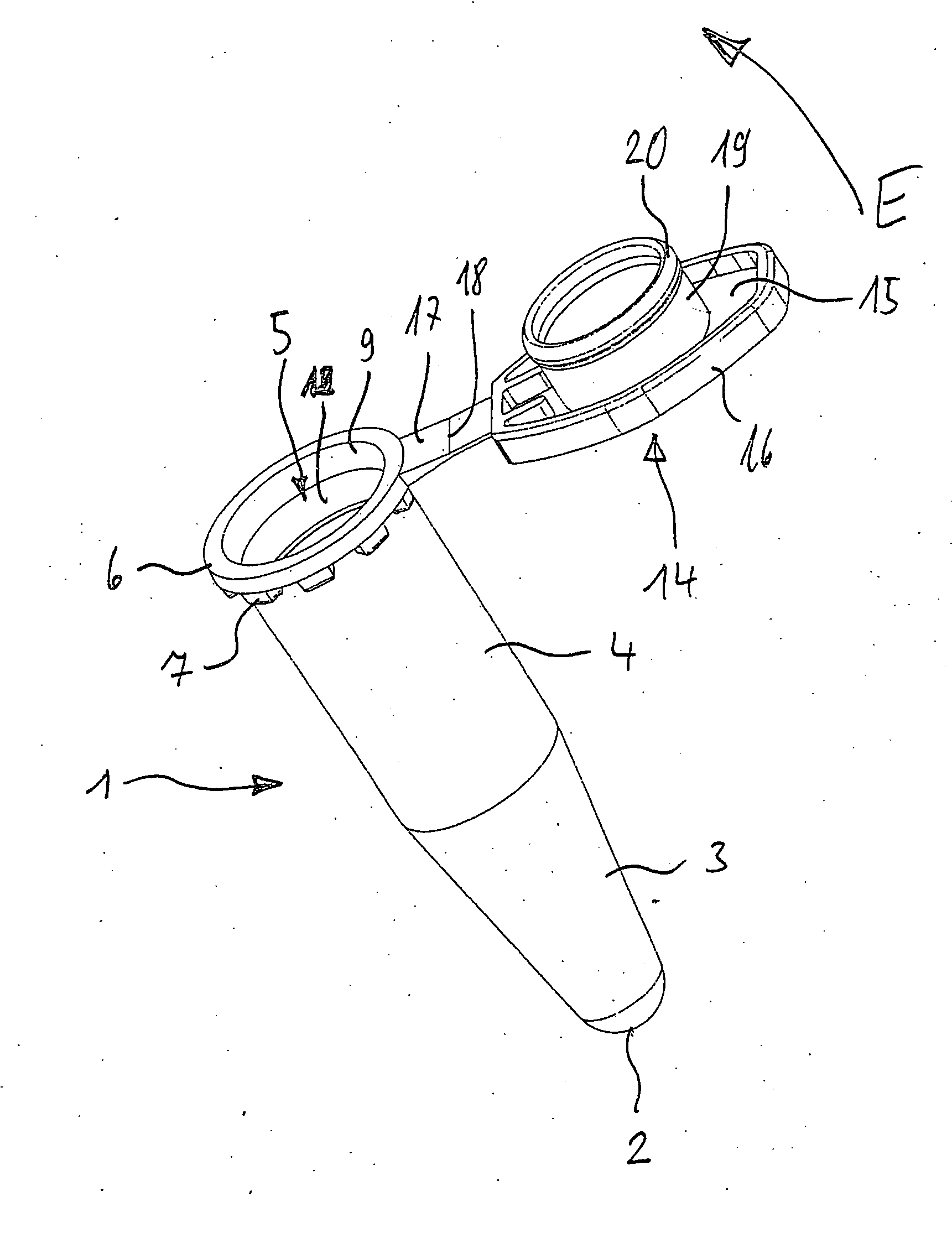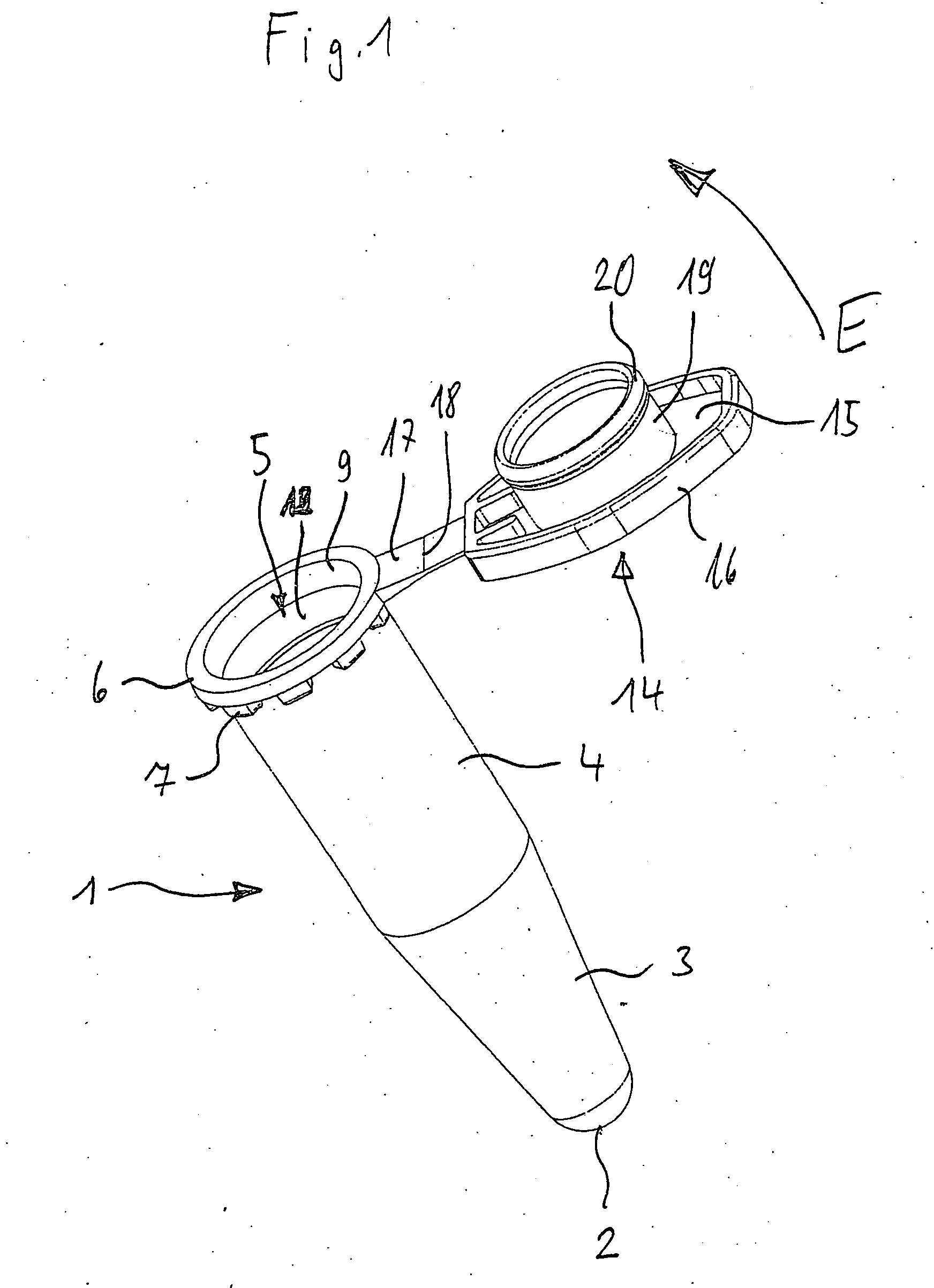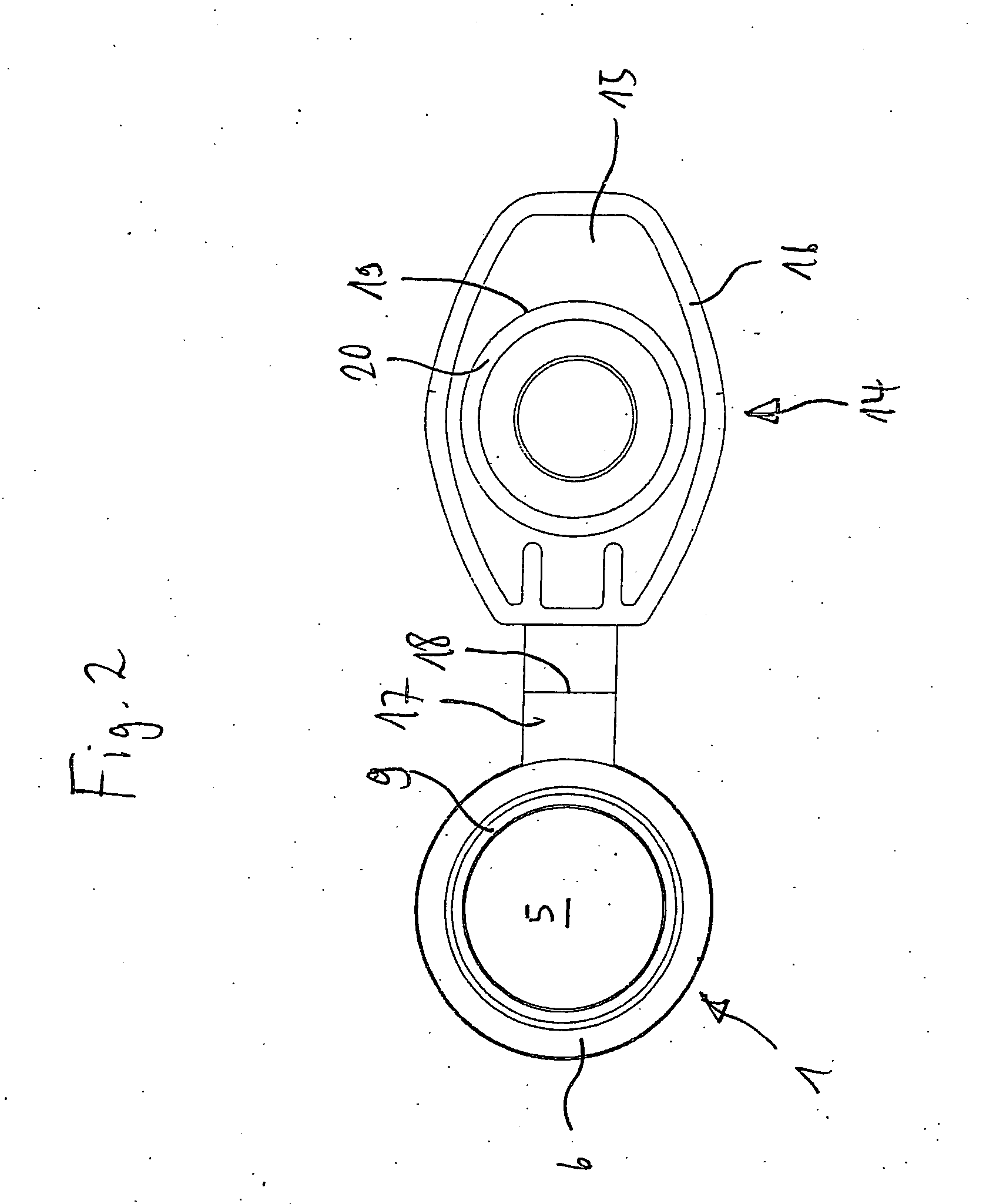Lidded vessel
a technology of a ring and a ring body, which is applied in the field of lidded vessels, can solve the problems of user stress and slight increase in force expenditure, and achieve the effects of reducing the wall thickness, and reducing the coefficient of sliding friction of the sliding ring
- Summary
- Abstract
- Description
- Claims
- Application Information
AI Technical Summary
Benefits of technology
Problems solved by technology
Method used
Image
Examples
Embodiment Construction
[0047] While this invention may be embodied in many different forms, there are described in detail herein a specific preferred embodiment of the invention. This description is an exemplification of the principles of the invention and is not intended to limit the invention to the particular embodiment illustrated The lidded vessel has a vessel 1 with a shell-shaped vessel base 2, an adjacent conical portion 3 and a cylinder portion 4 adjacent thereto, which comprises a vessel opening 5 and a vessel flange 6 surrounding said opening. In the region of the vessel opening 5, the vessel 1 is reinforced by ribs 7 which are located beneath the vessel flange 6 on the outer periphery of the cylinder portion 4.
[0048] On its inner wall 8 adjacent to the vessel opening 5, the vessel 1 has a conical insertion region 9 which gradually widens towards the vessel opening 5.
[0049] In the region of the smallest diameter, the insertion region 9 has a cylindrical end region 10. The insertion region 9 i...
PUM
 Login to View More
Login to View More Abstract
Description
Claims
Application Information
 Login to View More
Login to View More - R&D
- Intellectual Property
- Life Sciences
- Materials
- Tech Scout
- Unparalleled Data Quality
- Higher Quality Content
- 60% Fewer Hallucinations
Browse by: Latest US Patents, China's latest patents, Technical Efficacy Thesaurus, Application Domain, Technology Topic, Popular Technical Reports.
© 2025 PatSnap. All rights reserved.Legal|Privacy policy|Modern Slavery Act Transparency Statement|Sitemap|About US| Contact US: help@patsnap.com



